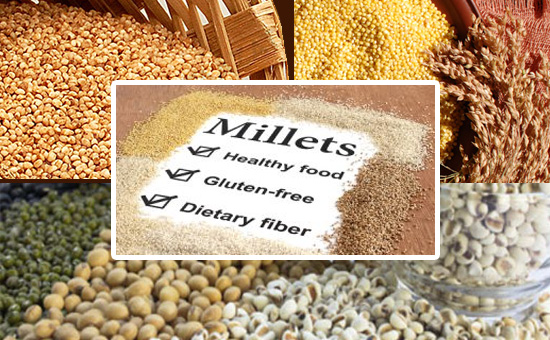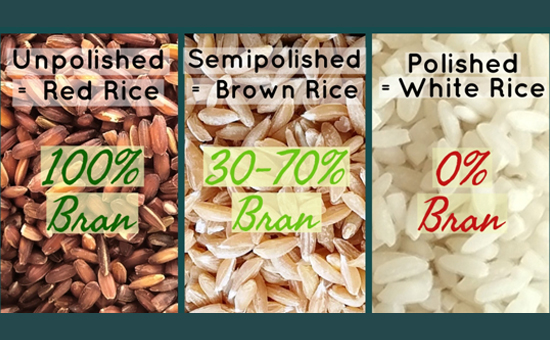- The 2013 NFSA de-linked coverage under Targeted Public
Distribution System from erstwhile Poverty estimates to Population estimates to
cover 67% of population. Poverty falling but coverage same. Current cost +1.75
lakh crs.
After the
Centre decided to provide free food grains to 81 crore
beneficiaries in 2023 under the
National Food Security Act, many rightfully expressed concern over the
permanent nature of such an expenditure. However, the basis of the
number of beneficiaries is not being questioned. After all, budget
allocation falls if the number of beneficiaries falls.
This article examines the basis for determination of 81 crore
beneficiaries.
“Until 1997, the Public Distribution System was universal in nature, however, the government introduced ‘Targeted Public Distribution System’…to focus on the poor. The coverage was linked to poverty estimates under two categories, namely, Below Poverty Line (BPL) and Above Poverty Line (APL). Later w.e.f. December 2000, government introduced “Antyodaya Anna Yojana” (AAY) in order to make TPDS more focused and targeted to poor and the poorest of poor (Antyodaya),” as per the 2020-21 annual report of The Department of Food and Public
Distribution.
The report also states that the National Food Security Act (NFSA) de-linked the coverage under TPDS from erstwhile ‘poverty estimates’ to ‘population estimates’, which entitles 75% of the rural population and 50% of the urban population - nearly two-thirds or 121 crore of the country’s population (141 crore in 2022) to subsidised food grains.
Under the
NFSA, the government provided five kilograms of food grains per person a
month at Rs 3 per kg for rice and Rs 2 kg for wheat. The families
covered under Antyodaya Anna Yojana (AAY) get 35 kg of food grains per month.
Thus, the
financial commitment under NFSA is about Rs 2 lakh crore per annum.
Was there a
national debate before moving from poverty targeting to providing food as
a legal entitlement? Did the Centre tell how
expenditure under NFSA would be funded?
Can a
developing and resource-constrained country provide subsidised food grains to
67 per cent of its population? If
poverty rates fall, should the number of beneficiaries be revisited?
The Centre determines poverty on the basis of consumption expenditure.
The National Sample Survey (NSS) conducts consumption expenditure surveys every
five years. It was last done in 2017-18 but the report was not made public for reasons unknown.
Hence, the 2011 Census and NSS consumption survey data from 2011-12
continue to be used even in 2023 to
determine 81.5 crore beneficiaries.
Since NFSA is now linked to population estimates, subsidy will only
increase and encourage illegal immigration.
Eligibility criteria for beneficiaries
Under NFSA, the Centre procures and transports food grains to designated
Food Corporation of India (FCI) depots.
The state
and union territories identify the eligible households to be covered under
TPDS. They are also responsible for updating the criteria of eligibility.
The NFSA
provides exclusion parameters, which are decided by states. For
example, in Odisha, the government has approved nine exclusion criteria
ranging from monthly income to owning of vehicles to having pucca houses
with three or more rooms, according to a paper by S.K. Satpathy.
Similarly, states like Meghalaya and Bihar also have exclusion
parameters. For e.g.
in Meghalaya anyone with kisan
credit with limit > Rs 50,000 (rural).
In Bihar’s case, “to meet the shortfall in coverage of beneficiaries, the State Government modified the guidelines in December, 2014 and decided to include regular Group IV/D employees from SC/ST category working with State Government,” according to CAG report no 54 of 2015.
 Millets are healthier, cheaper and consume less water. 2023 is International Year of Millets.
Millets are healthier, cheaper and consume less water. 2023 is International Year of Millets.
Use Aadhar database to reduce beneficiaries
When we have the One Nation One Ration Card scheme, should the
criteria be decided by individual states? Can the Centre decide a pan-India criteria
in consultation with states?
Started in 2015, the Pradhan Mantri Awas Yojana aims to
provide affordable housing. This calls for a review of exclusion criteria
because ownership of a house is probably an exclusion criteria even though
Odisha specified a pucca house with three or more rooms.
The criteria can include
a household member availing bank loan above a predetermined amount, say Rs 3-4
lakh, by using Aadhar number for identification at a district and
all-India level.
If the
government has to correctly implement the exclusion criteria, Aadhar must be
mandatorily required for purchase of items such as four-wheeler,
refrigerator, Kisan credit card, among others.
Since the
Centre manages the Aadhar database, it should take the responsibility
of removing beneficiaries based on the exclusion criteria. Without
exception, government employees cannot be beneficiaries.
Like the Centre asking citizens to voluntarily give up LPG cylinder
subsidy, a similar campaign could be run for NFSA beneficiaries.
Over-dependence
on rice and wheat under NFSA while ignoring millets and subsequent distortions
in market and nutrition require a separate review.
In 2015,
the Shanta Kumar Committee recommended bringing down the population coverage from 60 per cent to 40 per cent to “comfortably cover BPL families and some even above that.” The committee also recommended gradual introduction of cash transfers in PDS, which can amount to savings of Rs 30,000 crore annually and still give better deals to the customer.
Since
2015, direct benefit transfer (DBT) has been implemented in
Puducherry, Chandigarh, and Dadra and Nagar Haveli.
 Traditional Rice Varieties of India are beneficial.
Traditional Rice Varieties of India are beneficial.
States with the most NFSA beneficiaries
Based on a 2018 statement made by
Minister of State for Consumer Affairs CR Chaudhury in the Rajya
Sabha, the top nine states with highest number of NFSA beneficiaries
are Uttar Pradesh (15 crore), Bihar (8.57
crore), Maharashtra (7 crore) West Bengal (6.01 crore), Madhya Pradesh (5.07
crore), Karnataka (4.46 crore), Rajasthan (4.02 crore), Gujarat (3.82 crore)
and Tamil Nadu (3.57 crore).
If the number of beneficiaries above is taken as a percentage of the state’s population (per Census 2011), the top nine states are Bihar (82.3 per cent), Assam (80.8 per cent), Jharkhand (80 per cent), Chhattisgarh (78.9 per cent), Madhya Pradesh (75.21 per cent), Uttar Pradesh (75 per cent), Nagaland (70 per cent), Karnataka (65.8 per cent) and Odisha (65.1 per cent).
Some of these states have strong manufacturing activities and contribute
significantly to Goods and Services Tax. So, it might be worthwhile to
review the list of beneficiaries of these states first. Some states also give free food grains above the Centre’s allocation. A comparison of the list of beneficiaries of Centre and states might throw up interesting facts.
During a
2018 visit to Bastar, Chhattisgarh, I hired the services of a private
taxi owner who had bought his vehicle, a Mahindra SUV, on a bank
loan. He told me that his family received subsidised food grains under NFSA.
Even though NFSA is not based on poverty, the number of Indians living below poverty is a mystery. Various reports, academic papers and studies over the years have put different percentages of the Indian population to be living under the poverty line — from nearly 22 percent in 2013 to 14.6 percent in 2014-15 to 10.2 percent in 2019.
Food subsidy under NFSA contributes to the burgeoning fiscal deficit.
Support the poor by all means but weed out those who are no longer at the
bottom of the pyramid. And courts should not intervene since this is not a matter of law.
First published in ThePrint and Here
Also read
1. Ideas
to help clear Food Corporation of India
mess
2. Benefits
and Risks of Millets
3. Traditional
Rice Varieties of India